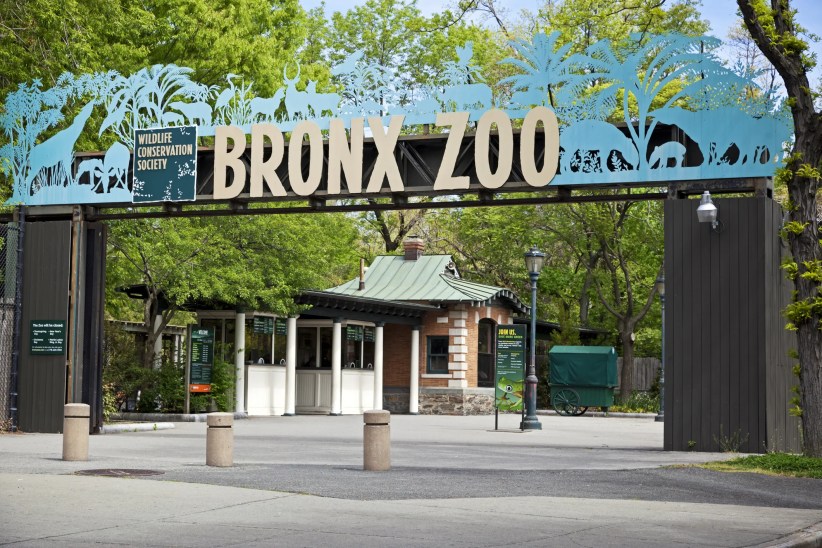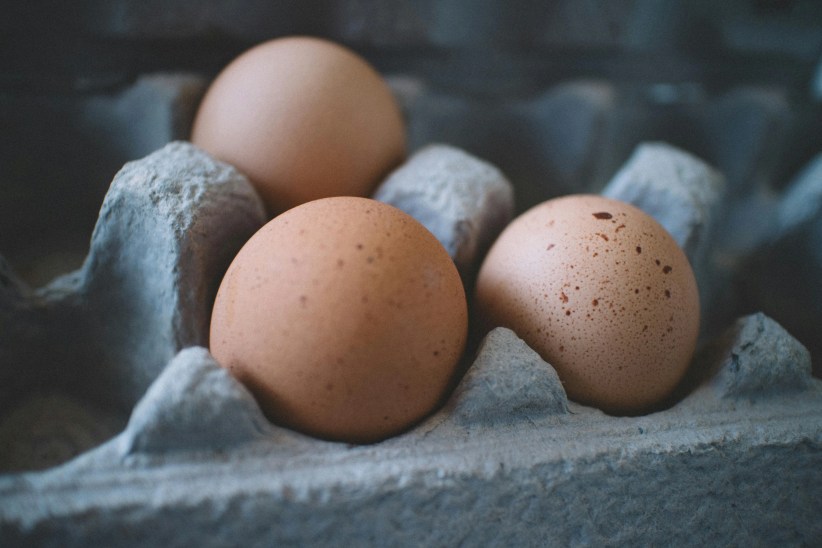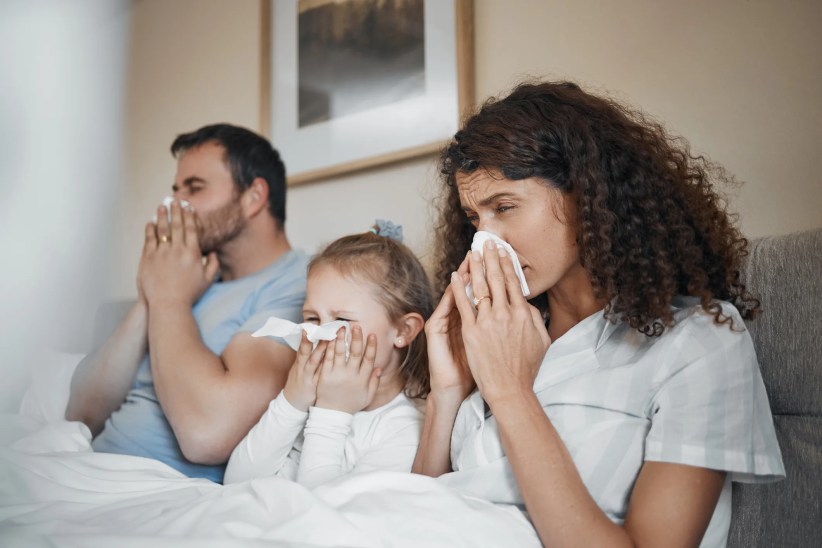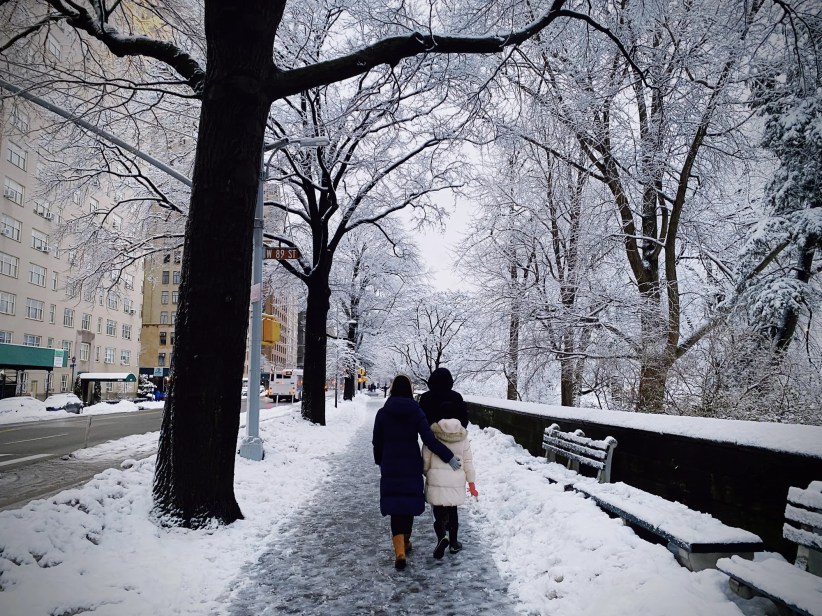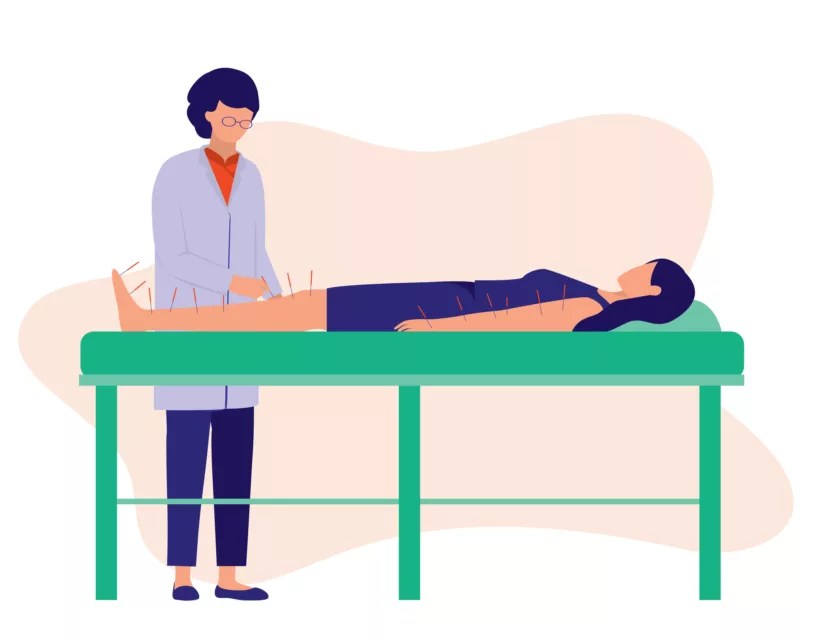
Acupuncture: Experts on What Parents Should Know
Lauren Dulberg knows all too well the feeling of tending to a newborn with colic in the middle of the night. When she gave birth to her oldest son, she was balancing the beginning stages of motherhood with studies of becoming a licensed doctor in oriental medicine.
It was ultimately her own intimate relationship with acupuncture that led her to consider it as a therapeutic strategy for her son’s acid reflux and chronic crying.
A few sessions later, her weeks-old baby stopped crying and vomiting as much. Since then, he’s been receiving acupuncture regularly as he goes into toddlerhood, alongside his younger sibling.
Dulberg is not the only parent turning to acupuncture, a traditional Chinese medicinal practice with a millennium-long history, as an option for their children’s health problems.
Many parents are reassessing their reliance on medication and looking for safe, accessible and empirically backed ways to treat their children’s mental and physical health challenges.
One side of healthcare is arguing that acupuncture meets many, or even all, of these requirements.
Among the more popular of traditional medicine practices, acupuncture has fought hard to cement itself in mainstream medicine.
In 2020, Medicare and Medicaid officially started covering acupuncture services for chronic back pain, and in recent years, a growing number of private insurance companies are offering coverage upon prescriptions from a physician.
Many hospitals have designated acupuncturist offices within their institutions.
Often, acupuncture is not a standalone practice, but a treatment used in tandem and conversation with Western health care.
The notion that the two systems have to be in direct competition with each other is a misleading one that has contributed to some of the hesitation around acupuncture, Dr. Mary Hamawy, LAc, MS from the Yinova Center said in an interview.
“Chinese medicine believes that the body’s trying to do the right thing and knows how to do the right thing, but that it gets distracted by outside forces, whether it’s a big city with lots of people, or pollution, or stress,” Hamawy continued, discussing her own daughter’s exposure to acupuncture. “We work hand in hand with our biomed brothers and sisters in a lot of cases.”
At the heart of acupuncture is the Chinese concept of Qi, energy currents that pass along channels and meridians in the body connecting various manipulatable points.
Stimulation of these points, whether through single-use, disposable needles, heat, or electricity, is believed to relieve it of certain ailments, pain and stress. The process is typically painless, with most people never feeling the insertion of needles.
For children and newborns, acupuncture might not even involve needles at all.
Dr. Mark Petruzzi, the acupuncturist at Stony Brook Children’s Hospital and a lecturer of oriental medicine, drew attention to the shonishin practice of pediatric acupuncture originating from the Kansai region of Osaka Japan.
In this method, there are nine primary types of needles, and three are geared particularly toward children. These needles are used to provide scratching, brushing and tapping movements on the skin rather than penetration.
The youngest patient that Petruzzi ever treated was only five days old. Throughout his career, he has seen and helped treat newborns with colic, indigestion, and jaundice, a yellowing of the eyes and skin due to bilirubin.
However, one of the most regular demands at Stony Brook Hospital for acupuncture is in pediatric oncology, where it is used as a complementary therapy to reduce symptoms conceived through chemotherapy, radiotherapy and other taxing cancer treatments.
Acupuncture has become an increasing staple in integrative cancer and physical trauma care for patients of all ages. The side effects, when done at a licensed clinic or practice, are minimal, limited to usually soreness and minor bleeding or bruising at the insertion points of needles, according to Mayo Clinic.
For acupuncturist Dr. Gudrun Snyder, traditional Chinese herbal medicine and acupuncture were an integral component of her breast-cancer healing journey and cultural identity at large — a historied passion that never disappeared and ultimately prompted her to leave behind the glitter and glam of a coveted Hollywood job.
Growing up with a physician grandmother who awoke at sunrise every morning to practice tai chi with a giant Chinese sword, she now pays homage to her roots through a personal private practice in Chicago called Moon Rabbit Acupuncture.
Beyond treating survivors, she also finds herself at the forefront of the modern mental health hotline. At Moon Rabbit, many patients are adolescents grappling with anxiety, stress and depression.
“Acupuncture can be super helpful for low level depression, for insomnia, for anxiety … and for headaches,” Snyder said. “Again, the downside of acupuncture is maybe you get a bruise, the cost perhaps, and the time, but otherwise, it can be super life changing.”
While questions persist on the financial accessibility of acupuncture, given that not all insurers cover such services and those that do could be limited in coverage of other areas, some argue that acupuncture is a preventative service that actually helps save trips to the doctor’s office, thus saving money in the long run.
Snyder also mentioned that many acupuncture offices offer their practice in a community format, where multiple patients are paired with one acupuncturist for a significantly lower price.
Rather than paying the traditional private session fees, which could be up to $70 or $100 per hourly session at some clinics, Snyder said that each person in a community format could pay around $5 to $10.
She urges parents to visit the specific categories of their insurance plan, understanding that at times, the same people who perhaps are most familiar with the effects of acupuncture through their culture are also the ones who struggle to pay for their health care.
While grateful for the traction that acupuncture has gained in recent years, something that she credits both to increasing studies and affirmations from celebrities like Michael Phelps, she and Dulberg look forward to the day that Western and Eastern medicine will see each other as partners, not competitors.
According to Snyder, acupuncture remains lacking in investment and attention from pharmaceutical giants.
“I think it’s a huge failing of our system to not accept that there are a lot of different things that go into making a medical decision,” Snyder said. “It’s important to be open and aware, [rather than] polarizing each other. In my own personal medical history, I use the Western medicine and I use Eastern instruments because we should use all the tools in our toolbox. And we shouldn’t be fighting against each other.”
Unfortunately, because acupuncture is often tailored to individuals, it’s challenging to research through the lens of the traditional scientific method. For young children and adolescents, their evolving bodies are an added consideration.
“In Chinese medicine, we are treating each individual as they come to us, and we don’t necessarily treat a diagnosis,” Hamawy said. “Let’s say we have three kids with anxiety. Each kid that’s coming to us is a different mix of nature and nurture than the next one. We need to see that individual specifically … and look at the person in front of us and see them for who they are, and not just the label of a diagnosis and match the label to a particular prescription. We tailor the prescription of both points and herbs and lifestyle changes to the individual as they need.”
Dr. Areti Vassilopoulos, a pediatric psychologist and Assistant Professor of Clinical Pediatrics & Child Psychology at the Yale School of Medicine who specializes in chronic pain and functional neurologic disorders, agreed that the more spiritual and chi-related mechanisms behind acupuncture are not as easy to scientifically evaluate, but also sees promise in the idea of an interwoven medical world that draws upon the potential of all “instruments.”
However, for Vassilopoulos, the hesitation is in the dangers of calling acupuncture — or any practice — a “blanket treatment” for all possible things in a way that would discourage or inhibit parents from exploring more evidence-based treatments for those conditions.
Nonetheless, she noted that while meta analyses and research surrounding acupuncture has been mixed, there is certainly demonstration of some positive effects with young children undergoing minor procedures, as well as in the context of headaches and migraines.
When it comes to solutions for pediatric chronic pain, Vassilopoulos encourages a deep exploration of all available options, from acupuncture to rehabilitative approaches and cognitive behavioral therapy.
The latter, she said, addresses mental health and chronic pain from a behavioral and body standpoint and is backed by a robust body of evidence, offering changes for patients that can be incorporated into everyday life.
Many of these alternative plans do not require children to ingest medicine which, Vassilopoulos says, could have adverse effects later on if pain is not managed correctly.
She added that poor management of acute pain can often make one more likely to experience chronic pain and therefore experience overuse of opioids and other such medications — an issue that is racial, systemic and magnified in communities with low access to non-medicinal resources.
Like Snyder and Dulberg, Vassilopoulos emphasized parental education in their children’s health care — and family involvement as a crucial beacon to confronting climbing rates of mental health disorders and addiction in the country.
As for what solution is best, Snyder says there’s not one right answer for every child or every family.
“I am all about using the right thing at the right time, [and] I always go back to the toolbox analogy,” Snyder said. “Why not use all the tools? There is a place for all of us in modern society and medicine.”
Psst… Here’s the ultimate guide to visiting Governors Island this year!













